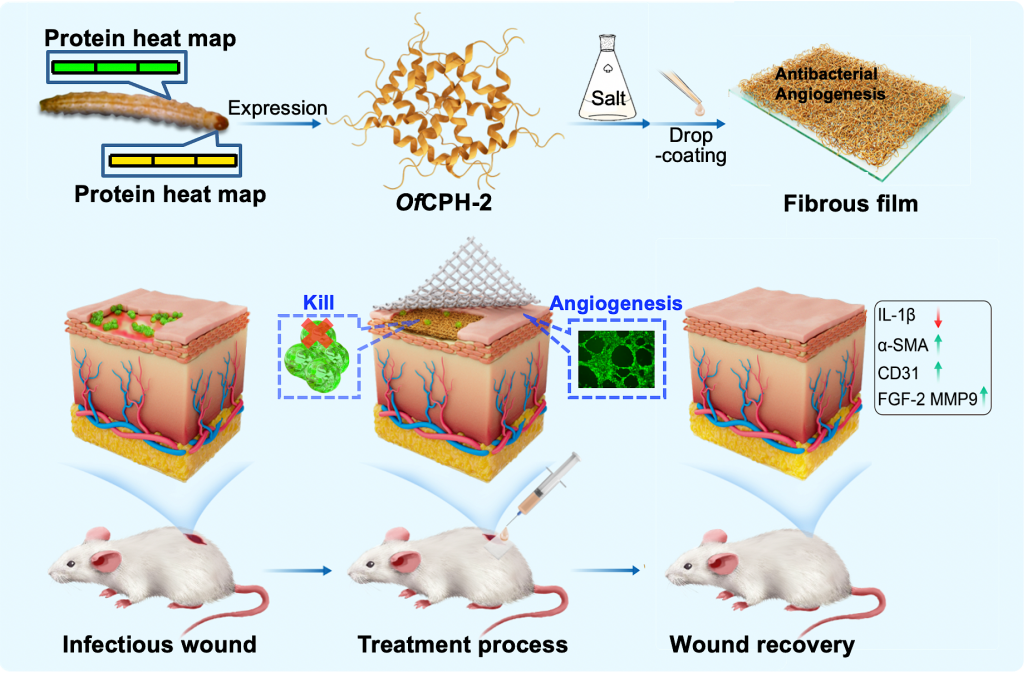To resolve the challenge of how to effectively resist multi-drug resistant bacterial infection and simultaneously promote wound healing and skin regeneration, the team led by Professor Zhang Guangjian from Department of Thoracic Surgery of the First Affiliated Hospital (FAH) of Xi'an Jiaotong University (XJTU), cooperated with the teams of Professor Huang Yinjuan from School of Materials Science and Technology of XJTU and Professor Liu Tian from Dalian University of Technology screened a high-abundance protein from the cuticle of the Ostrinia furnacalis, evaluated its assembly performance, and applied it to the wound healing of Staphylococcus aureus infection based on the philosophy of traditional Chinese medicine.

The research team innovatively utilized salt solution to induce insect cuticle protein (OfCPH-2) self-assemble into biofilm dressing-like structure, and found that OfCPH-2 nanofibrils has excellent biocompatibility and effectively induces endothelial cell angiogenesis, which is comparable to commercial matrix glue. Meantime, the research team also confirmed that OfCPH-2 nanofibrils has broad-spectrum antibacterial activity, and exerts certain inhibitory effects upon Gram-positive, Gram-negative bacteria and even fungi, providing a new idea for natural antibacterial products. Based on these findings, the research team further constructed a rat model with infectious wound, assessed the efficacy in antibacterial and accelerated healing of infectious wounds, and preliminarily unraveled the possible mechanism. Taken together, considering the advantages of convenient, green, economical, safe and stable characters, the research team identified the positive role of insect cuticle protein self-assembly in the treatment of infectious wounds, and proposed a novel strategy for insect protein dressing in clinical application.
These findings were published as an article entitled “Controllably Self-Assembled Antibacterial Nanofibrils Based on Insect Cuticle Protein for Infectious Wound Healing” in ACS Nano (IF:17.1), an international authoritative journal in this field. Gong Qiuyu from the Department of Thoracic Surgery and Liu Bohao, a postgraduate student from Department of Thoracic Surgery of the FAH of XJTU, and Yuan Fenghou, a doctoral student from Dalian University of Technology are the first authors. Professor Huang Yinjuan, Professor Liu Tian and Professor Zhang Guangjian are the co-corresponding authors. The FAH of XJTU is the first and last corresponding affiliation of this article.
Article link: https://pubs.acs.org/doi/abs/10.1021/acsnano.3c07131